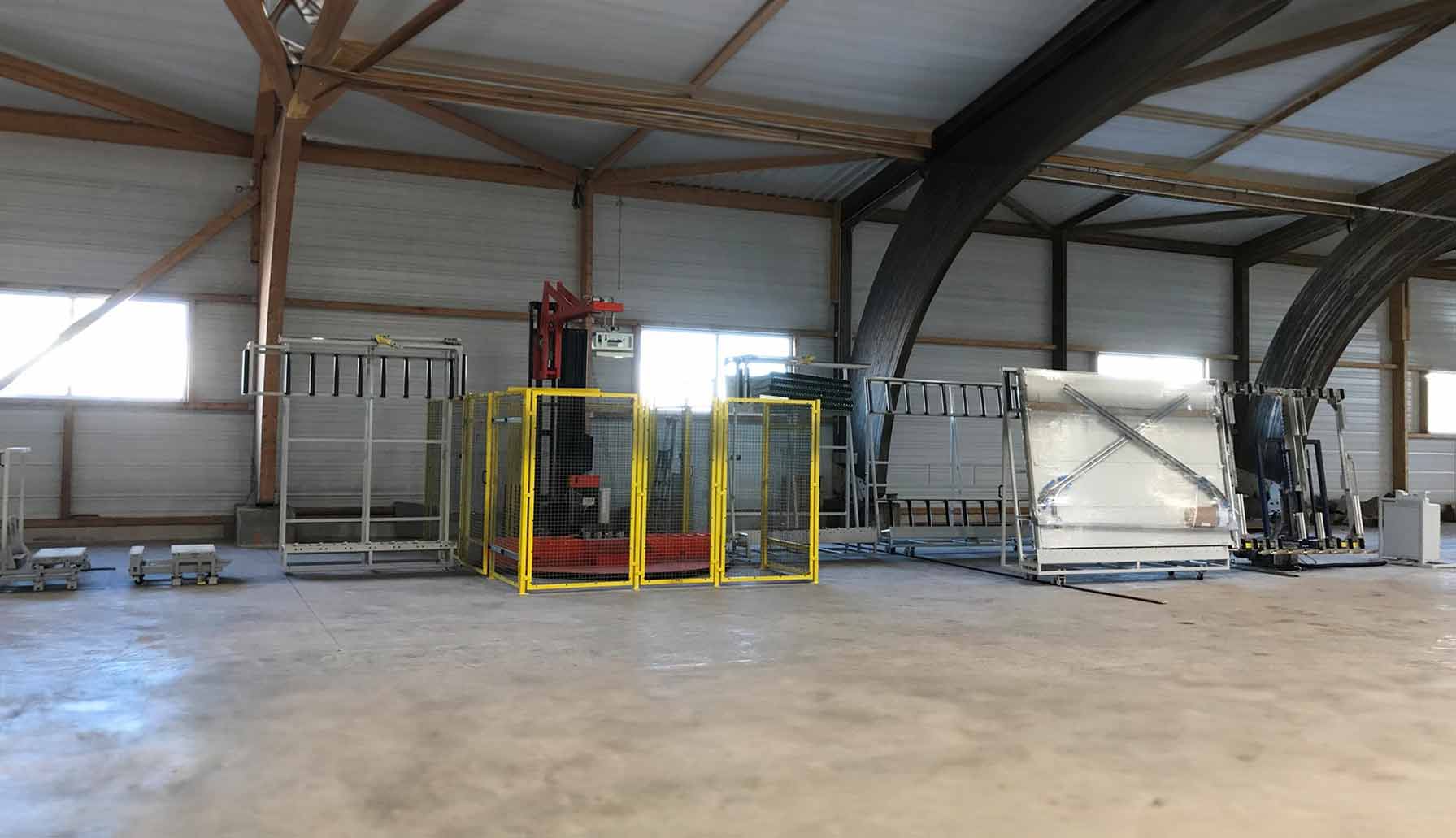
Assembly and packaging line for garage doors
The teams at THOMAS CONSTRUCTIONS MÉCANIQUES - TCM design, develop and build assembly and packaging lines.
With this installation, sectional doors can be assembled flat, tilted vertically (80°) to finish the assembly, stored on the edge in a buffer zone, wrapped in film, again while vertical (90°), together with their accessory packs and, finally, packaged in sets of four for shipping.
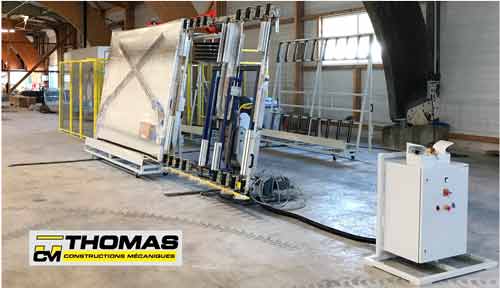
The various assembly and transfer workstations are designed to facilitate the operators’ work and ensure an ergonomic working environment.
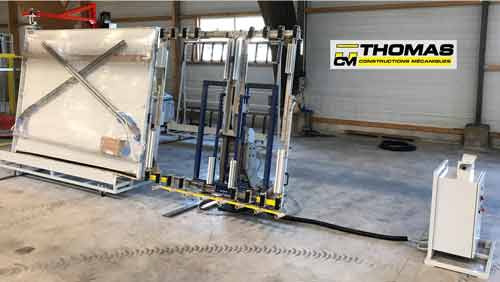
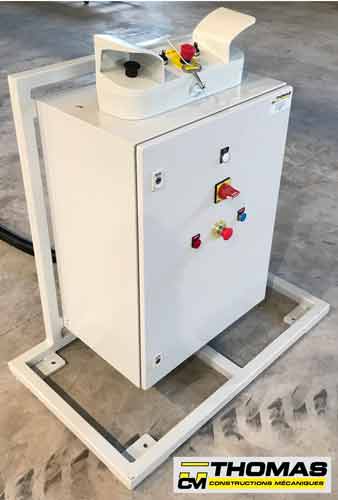 At the first workstation, the operator mounts the frame and assembles the door on an adjustable motorised table. It is adjusted manually; the assembly is pneumatically clamped in place to ensure the right position. The table top is electrically tilted from a horizontal position to a near-vertical position (80°); it is operated via a console fitted with a two-hand control.
At the first workstation, the operator mounts the frame and assembles the door on an adjustable motorised table. It is adjusted manually; the assembly is pneumatically clamped in place to ensure the right position. The table top is electrically tilted from a horizontal position to a near-vertical position (80°); it is operated via a console fitted with a two-hand control.
When in the vertical position, the transfer rollers at the bottom of the table, on which the door is positioned, are perfectly aligned with the trestle rollers at the second workstation.
The second workstation is a buffer storage zone made up of two mobile trestles; the trestles are equipped with a floor lock so that they are perfectly aligned with the first and third workstations. The trestles move along an axis: one side slides along a guide rail affixed to the floor to ensure that it is coaxial with the equipment before and after it. If the production volume needs to be increased, this workstation can be upgraded by integrating a second assembly station.
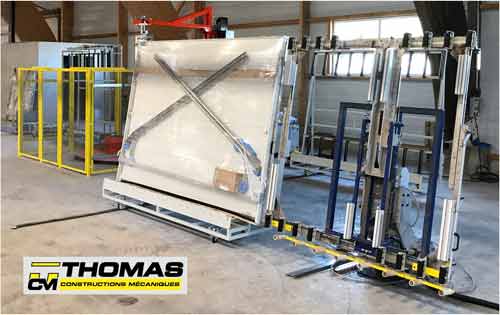
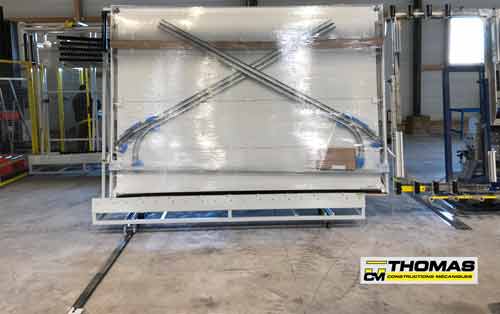
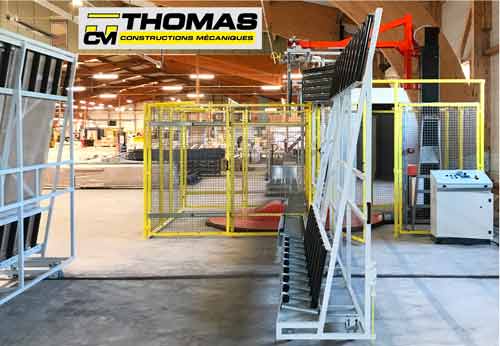 The third workstation transfers the doors from the trestles to a high-capacity wrapping machine. In order to be wrapped in film, the sectional doors must be perfectly vertical; this workstation moves the products from a near-vertical position (80°) to a perfectly vertical position (90°), while ensuring complete safety for the operator thanks to the retractable telescopic guides equipped with a fall-protection system.
The third workstation transfers the doors from the trestles to a high-capacity wrapping machine. In order to be wrapped in film, the sectional doors must be perfectly vertical; this workstation moves the products from a near-vertical position (80°) to a perfectly vertical position (90°), while ensuring complete safety for the operator thanks to the retractable telescopic guides equipped with a fall-protection system.
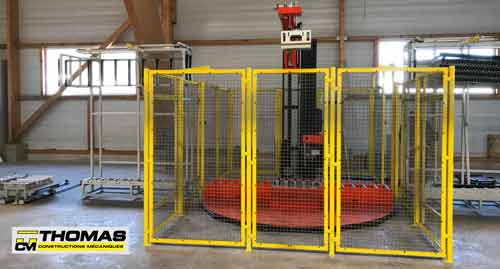
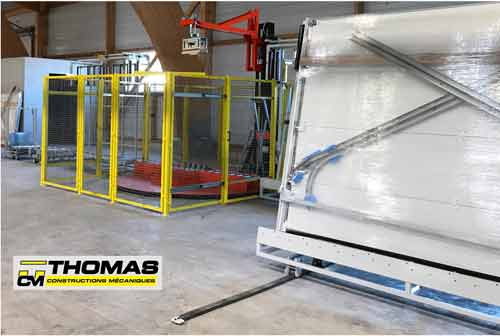 At the fourth workstation, the sectional door is wrapped in film. The wrapping machine has a passage capacity of 3,200mm, which enables large doors to be wrapped. The unit is semi-automatic: the operator rolls the door into line with the wrapping machine, clamps it to the platform using a pneumatic pedal, adds the cardboard accessories and attaches the film to the door.
At the fourth workstation, the sectional door is wrapped in film. The wrapping machine has a passage capacity of 3,200mm, which enables large doors to be wrapped. The unit is semi-automatic: the operator rolls the door into line with the wrapping machine, clamps it to the platform using a pneumatic pedal, adds the cardboard accessories and attaches the film to the door.
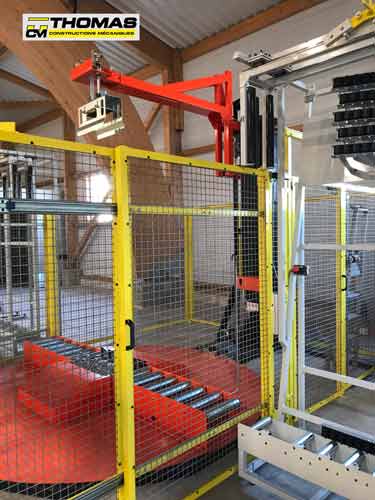
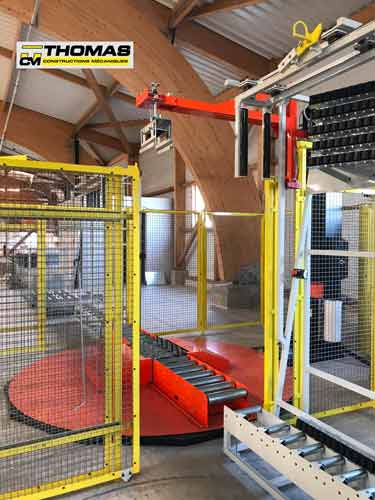 The operator then starts the wrapping machine cycle, which runs autonomously.
The operator then starts the wrapping machine cycle, which runs autonomously.
The wrapping machine is installed in a mesh protection enclosure, equipped with two sliding side doors with electromagnetic locks to allow entry and exit of the doors. The operator can choose to stop the wrapping machine cycle either for a whole number of revolutions or for half a revolution on the last rotation; for the final packaging operation, the doors are positioned back to back.
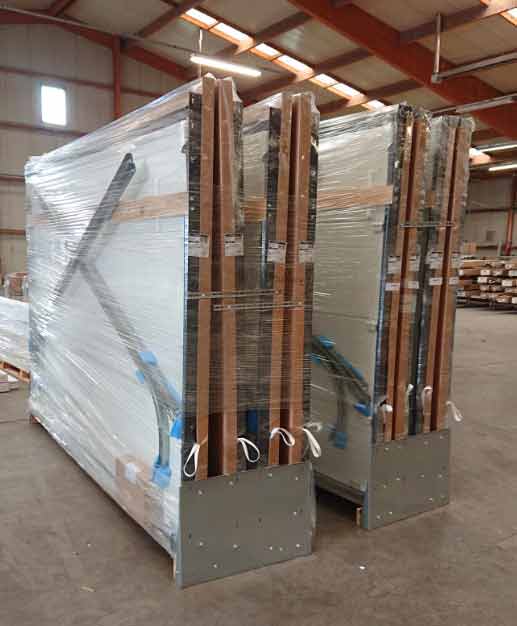
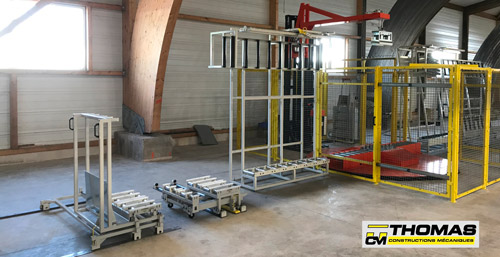 At the last workstation, the doors are packed for shipping. This workstation is composed of several modules; the first is used to remove the door in complete safety using the telescopic arms and fall-protection system. The second module has four slots and moves perpendicular to the door to align each slot with the first module. The last module is similar to the second, but also moves in line with the door to adapt to different door lengths. It also has a slot for fitting a metal end cap to which the doors are screwed for transport.
At the last workstation, the doors are packed for shipping. This workstation is composed of several modules; the first is used to remove the door in complete safety using the telescopic arms and fall-protection system. The second module has four slots and moves perpendicular to the door to align each slot with the first module. The last module is similar to the second, but also moves in line with the door to adapt to different door lengths. It also has a slot for fitting a metal end cap to which the doors are screwed for transport.
This type of installation is not solely for use with sectional doors; it can also be used for assembling and packaging windows, prefabricated walls made of wood or steel, and, more generally, any type of structure assembled horizontally and packaged vertically.
All our installations comply with CE standards and can be supplied with a certificate issued by an accredited safety body upon request.



